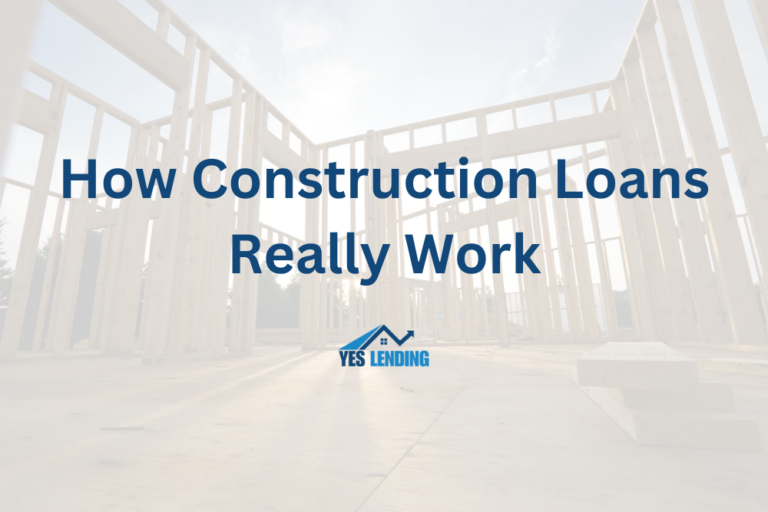Are you considering building a home from the ground up, expanding an existing property, or developing a multi-unit project? If so, you’ll likely need a construction loan. Unlike traditional mortgages, which are used to purchase move-in-ready homes, construction loans provide funding for building projects in phases.
Understanding how construction loans work can help you navigate the process with confidence and make informed financial decisions.
Why Would You Need a Construction Loan?
Construction loans are useful in various real estate scenarios, including:
- Buying a home that needs demolition and rebuilding
- Purchasing land to build a property
- Tearing down an existing property and subdividing the land for multiple homes
- Expanding a home to increase square footage
- Developing a residential community or investment properties
Unlike traditional home loans, construction loans provide funding in increments as work is completed, ensuring that builders stay on schedule and budget.
How a Construction Loan Works – Step by Step
1. Get Pre-Approved
The first step is securing pre-approval for your construction loan. Lenders assess your financial profile, project feasibility, and construction team. One key factor in approval is having an experienced general contractor or being a seasoned developer yourself.
2. Identify the Right Property or Project
Once pre-approved, start scouting for a suitable lot, teardown property, or expansion opportunity. Keep zoning regulations, neighborhood trends, and resale potential in mind.
3. Consult With an Architect
Before making an offer, consult an architect to determine what can be built on the property. This step ensures your project aligns with local zoning laws and maximizes the land’s potential.
4. Make an Offer on the Property
After gathering all necessary information, present your offer to the seller. Once accepted, create a detailed scope of work outlining project costs, timelines, and specifications.
5. Submit Your Loan Application
With your accepted offer and project details, submit your loan application to the lender. The bank will review your financials, the project’s viability, and the qualifications of your contractor.
6. Underwriting & Draw Schedule Creation
While your loan undergoes underwriting, the bank establishes a draw schedule—a funding plan that releases money in stages based on project milestones.
7. Loan Approval & Closing
Once all loan terms are agreed upon, and underwriting is complete, you close on your loan. This step finalizes your financing and allows you to start construction.
8. Construction Begins – Draw Period & Inspections
The bank disperses funds according to the draw schedule, releasing money in phases as work progresses. However, each phase must be inspected and approved by an independent inspector before funds are released.
9. Project Completion & Final Loan Conversion
Once construction is complete, the loan typically converts into a permanent mortgage or must be refinanced based on the original agreement.
Key Takeaways
- Pre-approval is crucial—having an experienced contractor or developer background improves your chances of approval.
- Zoning and regulations matter—consult an architect to ensure your project complies with local laws.
- Banks fund projects in stages—each phase requires an inspection before money is released.
- Loan terms vary—some construction loans automatically convert to permanent mortgages, while others require refinancing.
A construction loan can be a powerful tool for bringing your real estate vision to life, whether it’s building your dream home, expanding an existing property, or developing multiple homes. By understanding the process and working with experienced professionals, you can confidently navigate the path from blueprint to completion.
Thinking about applying for a construction loan? Contact Yes Lending for guidance tailored to your project and financial goals!



